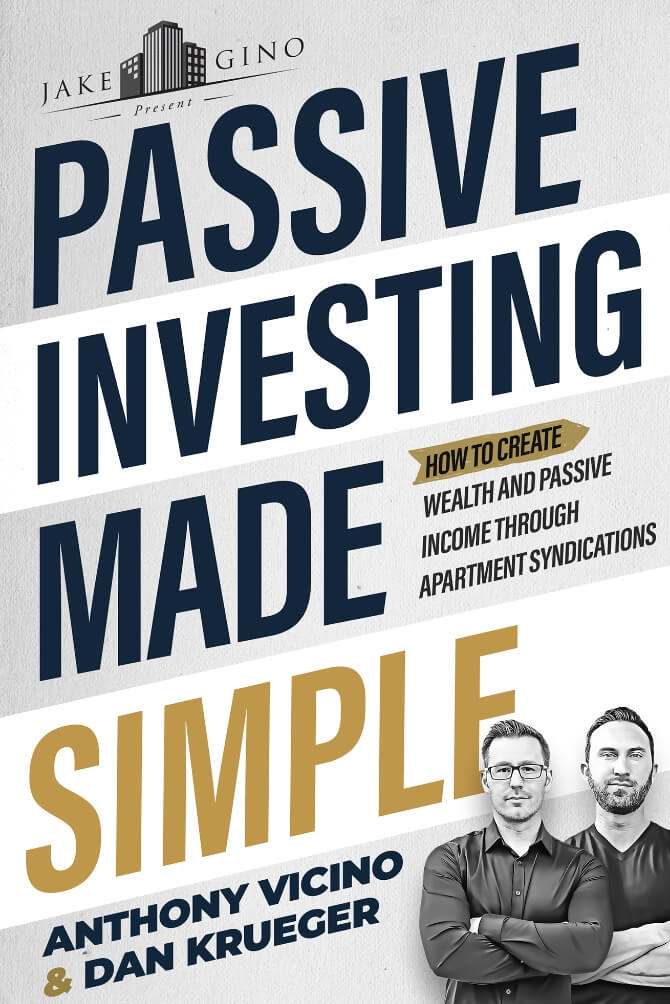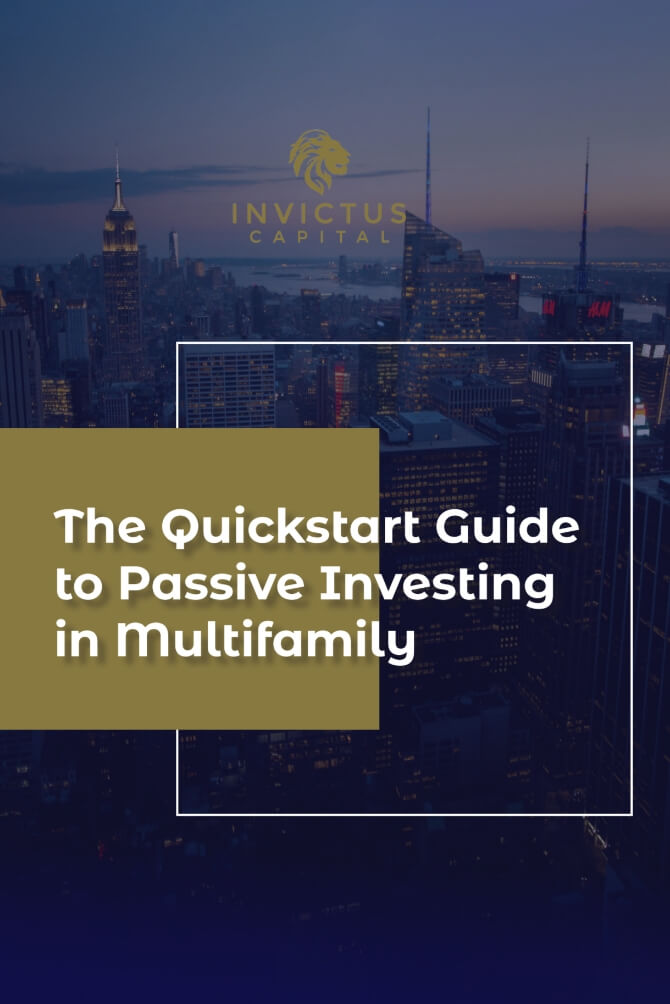What exactly is a Cap Rate, and why is it so important to have this knowledge when evaluating a real estate investment?
In today’s episode, we will be taking the complexity out of Cap Rates. By the end, you’re going to understand how cap rates work, why it works that way, and how to utilize the perks that come with cap rates fully.
Tweetable Quotes:
“We’re so used to thinking when we see the word ‘rates’ like rate of return. They think bigger is better, higher is better, but when you’re buying something, you actually want the cap rate to be pretty high. Once you own it, and in the future, you’d like to see that cap rate come down so that the market is willing to accept a lower rate of return on the asset.” – Dan Krueger
“I would not get too hung up on saying, ‘I’m buying at this cap rate or that cap rate.’ There’s money to be made at 3-cap, there’s money to be made at a 10-cap. If that’s one of your defining metrics, you’re looking at it through the wrong lens.” – Anthony Vicino
Resources Mentioned:
LEAVE A REVIEW if you liked this episode!!
Keep up with the podcast! Follow us on Apple, Stitcher, Google, and other podcast streaming platforms.
To learn more, visit us at: https://invictusmultifamily.com
**Want to learn more about investing with us?**
We’d love to learn more about you and your investment goals. Please fill out this form and let’s schedule a call: https://invictusmultifamily.com contact/
**Let’s Connect On Social Media!**
LinkedIn: https://www.linkedin.com/company/11681388/admin/
Facebook: https://www.facebook.com/invictuscapitalventures/
YouTube: https://bit.ly/2Lc0ctX
Dan Krueger (00:15):
Welcome to multi-family investing made simple in under 10 minutes where we take some of the most common and important real estate terms and simplify them so that you can understand them quickly and easily in less than 10 minutes, probably less than seven. Because we’re pretty fast today. We are talking about capital expenditures and or CapEx. Anthony, what the heck is CapEx?
Anthony Vicino (00:37):
That’s a good question. Capex is the funds used to acquire, upgrade and maintain a property. So a way of thinking about an expense that would qualify as a CapEx is, does it improve the useful life of the property, which is fundamentally different than a repair or routine maintenance item? So when we go into a property, a multifamily deal, one of the things that is so powerful about that vehicle is the ability to add value. And this is where capital expenditures comes in. We’re going to go into these properties with our CapEx budget, and we’re going to deploy capital to improve the units, to improve the properties so that we can charge a rent premium and improve the net operating income of that property, and then increase the value and that’s capital expenditures. What are some examples of some of the most common capital expenditures that we execute?
Dan Krueger (01:29):
Yeah. So I guess the big ones are going to be like roofs, boilers, windows new doors, those things that aren’t going to be popping up on a reoccurring basis on your P and L. So not utilities, not unclogging a drain, not the insurance payroll. So it’s the stuff that pops up infrequently is typically larger. And like Anthony said, is done to maintain and or improve the asset. And the key thing here is that if you’ve listened to our other bits of content on these terms, you’ve heard us talk about net operating income and capital expenditures actually show up underneath the line. What that means is they don’t impact the NOI. So if you replace the roof, let’s say its a hundred thousand dollars. Normally your net operating income for the year was $200,000. If you replace a hundred thousand dollar roof and normally your NOI is $200,000, it’s not like your NOI goes down to a hundred thousand dollars repair that roof, right? That wouldn’t make any sense because improving the roof is going to improve the value of the building. And if you drop your NOI by a hundred thousand dollars, then theoretically your value would go down. That would make any sense. So it’s important to note that these items that go below the line, that don’t impact NOI, and they’re not going to disrupt your cash flow for that reason as well.
Anthony Vicino (02:47):
Yeah. I will push back here. They will impact your NOI in that if you do them, you execute them correctly. You should be able to drive up the revenue as a result or decrease the expenses as a result. So things like if we’re going into a unit and we’re putting in new flooring and painting and a new appliances and doing some renovations that then bring it up to market standard and we’re able to get a $200 rent premium. Those were all capital expenditures. If we’re going in there, like Dan says, and we’re just unclogging the sink, no go. It’s not, not a cap ex that’s just routine repair and maintenance. So not going to help you out. Okay.
Dan Krueger (03:21):
I was going to say, we’re working on a deal right now. And I had an investor asked me about this during one of our conversations. I said, Hey, you know, Dan, these buildings are gorgeous. There’s old brownstones, this really great neighbourhood. And they’re really beautiful. However, you know, I’m a little concerned about the age. You know, some of these are built in the twenties and the teens, you know, what, if a boiler goes out, isn’t that going to just kill the cash flow? Or what if the roof needs to be repaired? Like, isn’t that going to just kill our cash flow for the entire year? And I said, well, no, because we’ve got capital X reserves set aside for those items. So when they pop up, we’ll pay for them, but they’re not going to be deducted with the operating expenses prior to cash flow being distributed to investors.
Dan Krueger (04:01):
So it’s not going to interrupt the cash flow in that sense. So that’s kind of the, the important nuance here is that these items they’re infrequent, they’re below NOI and they’re not going to be taken out of cash flow. And this is assuming that the deal is being operated. Well, sometimes guys don’t come to the table with reserves. They come in with very little capital upfront and they’re just using cash flow to fund CapEx. That could be a slippery slope. But I just wanted to use that example of that conversation I had with that investor, because I kind of, I think it kind of illustrates a common misconception that new investors have, which is everything is going to be paid for out of the cash flow. Isn’t it? Yeah.
Anthony Vicino (04:36):
Yep. And you touched on it there. I want to re-emphasize it because it’s really important to understanding one how we operate our deals and then two, how some other operators operate their deals. So for us, when we go into an asset, we come in fully capitalized. We project, what are the capital expenditures that we see over the life of this project? Okay. We’re going to need a new roof in year two let’s budget for that. We’re going to need to go in there and do about $5,000 of unit upgrades per unit. So let’s budget for that. And then when we’re pooling all our capital to acquire this asset, we’re coming to the table with that money we’re coming well capitalized. So we can deploy that whenever we want to, we’re not forced to, we have the money available to do so. And so what that means is when we do our underwriting it’s with that money already baked into the equation.
Anthony Vicino (05:20):
So as we deploy the capital, it doesn’t hurt the returns, other operators by comparison, they’re maybe not going to come to the table with all the capital expenditure reserves that we would, they’re going to maybe have a little bit set aside, but then they’re going to take a portion every month out of cash flows and put that aside. Now that’s a slippery slope. Like Dan’s pointing out because let’s say something really big goes out unexpectedly, suddenly your roof or your boiler just blows up and you haven’t had enough months to really build up that capital expenditure reserve. Then suddenly you’re going below and into the red, on the deals operations. So that’s not something that we like to do. We sleep better. If we come to the table with all the money day one, we’re ready to go. And we have the option of deploying it.
Anthony Vicino (06:07):
If we want to, or we can sit on it. If we think that’s probably a better move in the short term, well said, well said, couldn’t have said it better myself. How many minutes in are we? I feel like we did that. Like five that’s, six and a half minutes. That’s pretty impressive, honestly, for CapEx. So that is, multi-family investing made simple in under 10 minutes before you go do us a favour, you know the routine, you know what I’m going to ask you. You might as well just go do it. So I can you just stop asking already? I don’t want to guilt you into this, but please go leave a review. You’ve been listening to us. You’ve been consuming our voices. You’ve been eating a little bit of our life force slowly now. No, give us a, give us aggressive it back. Yeah. I don’t know where I’m going with that sleep, but go leave us a review, go to iTunes, Spotify, and just take a moment. Drop us a review. Five stars. It helps the algorithm helps spread the word and it gives us the warm and fuzzy lets us know that you like us. So go do that and we’ll catch you next week.



